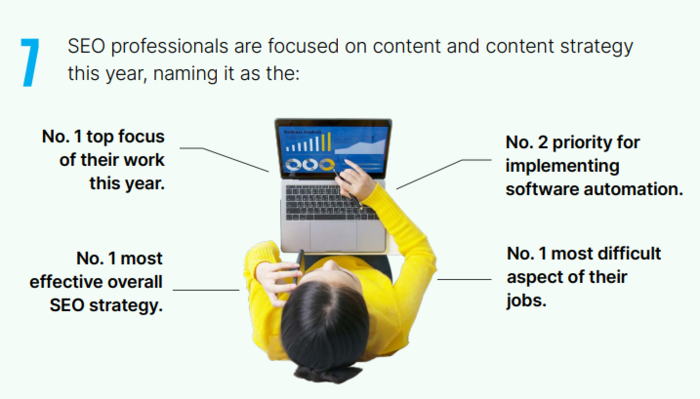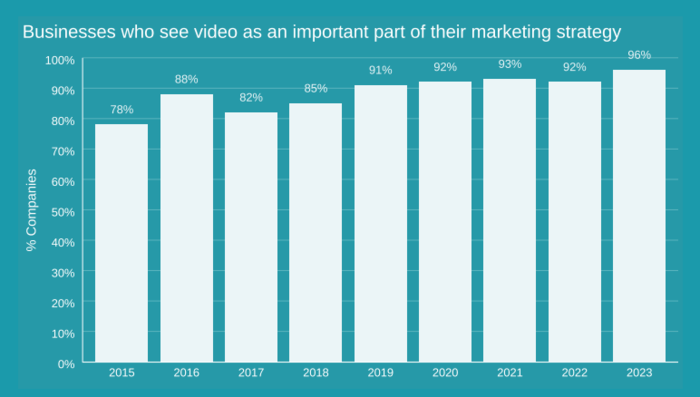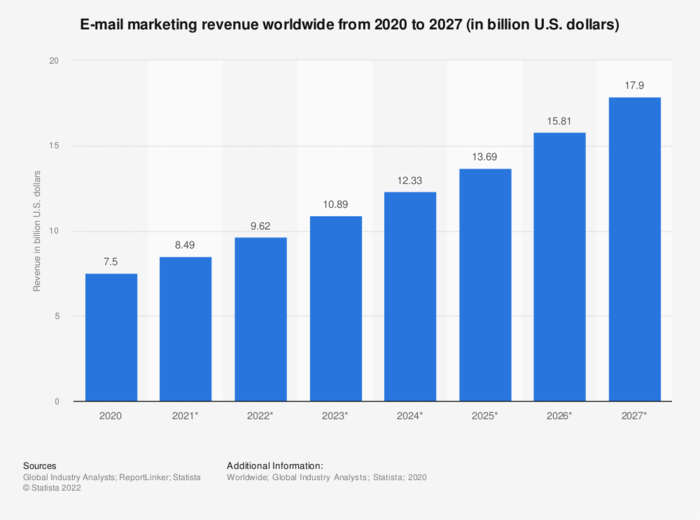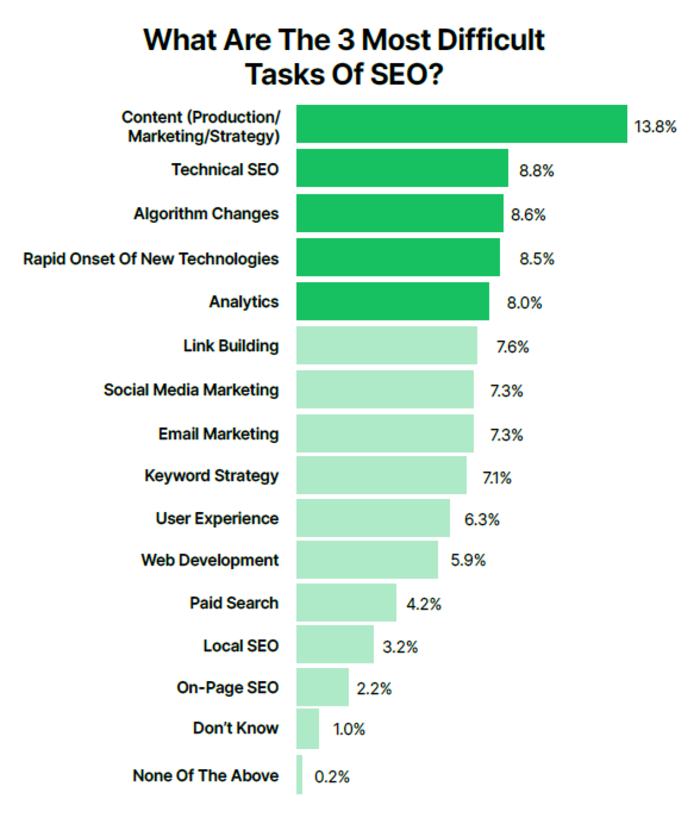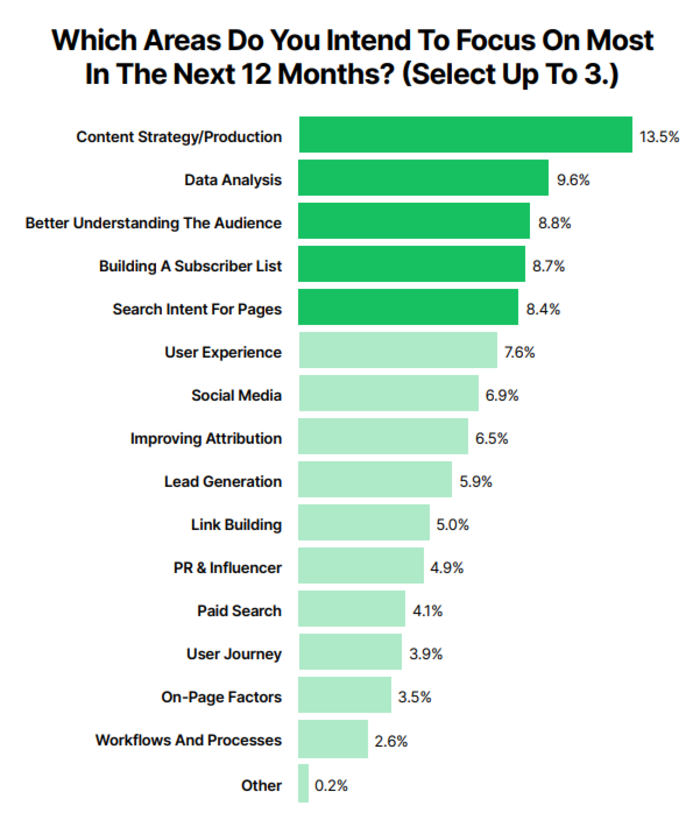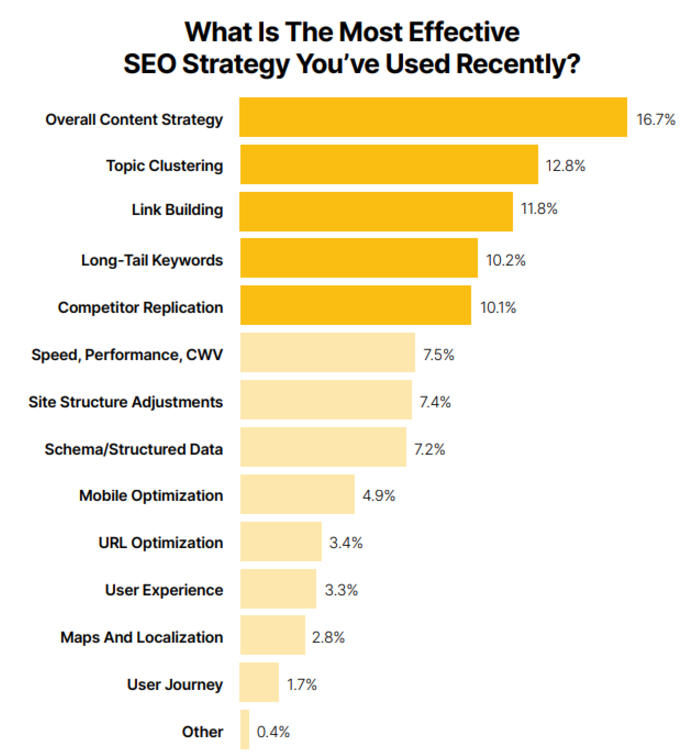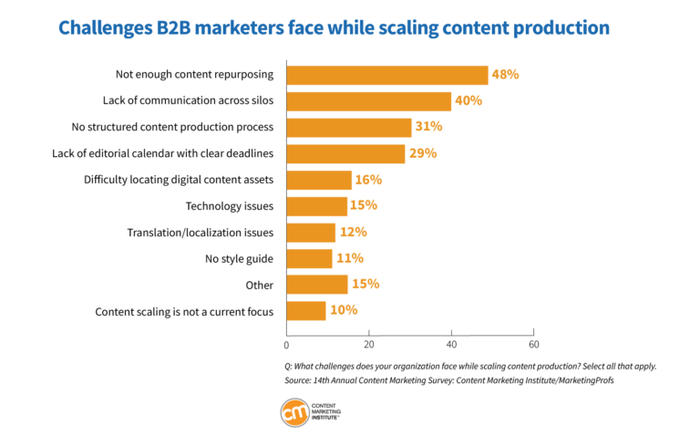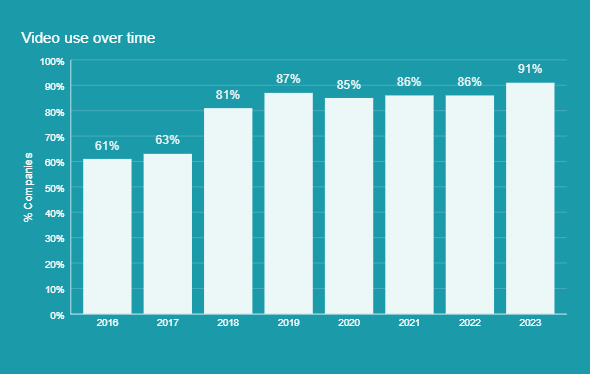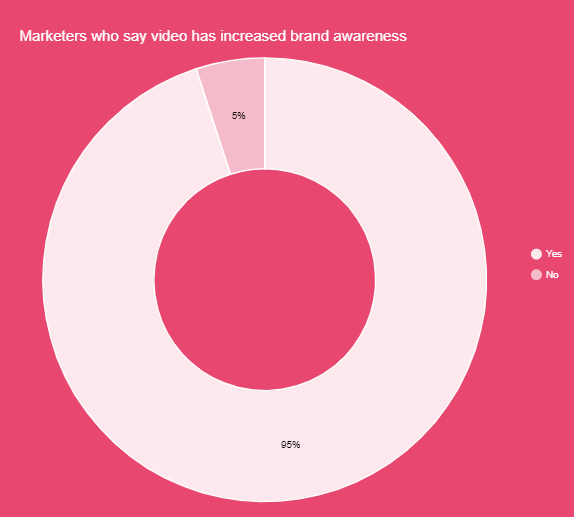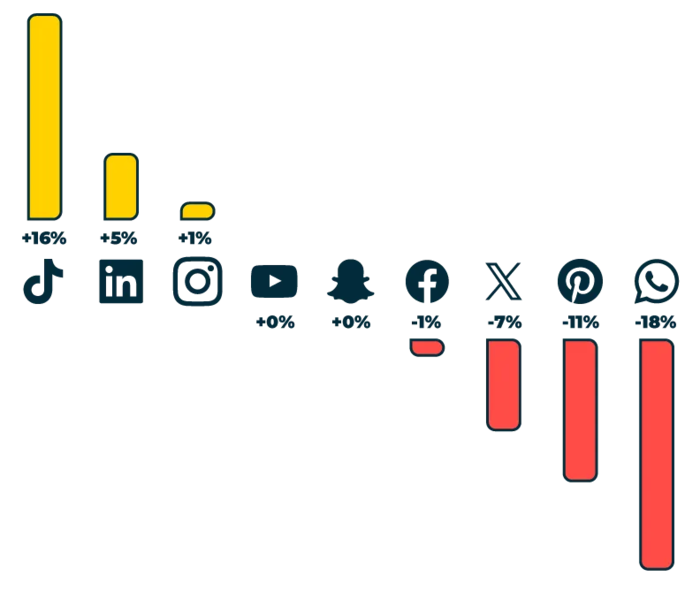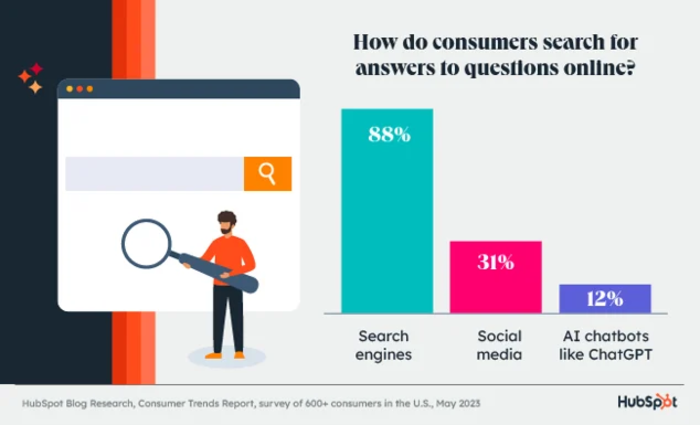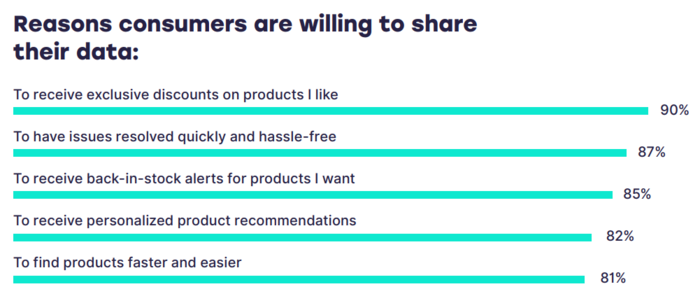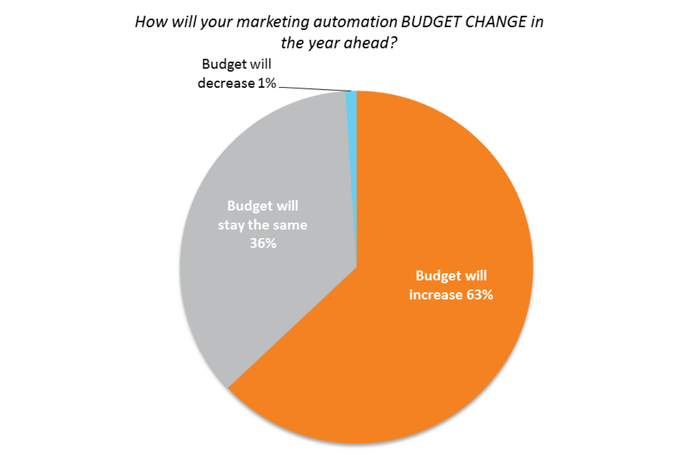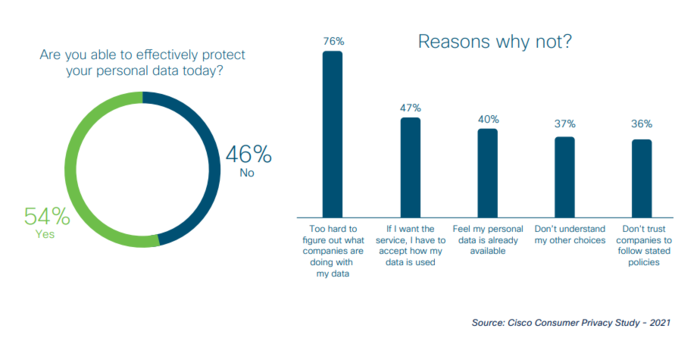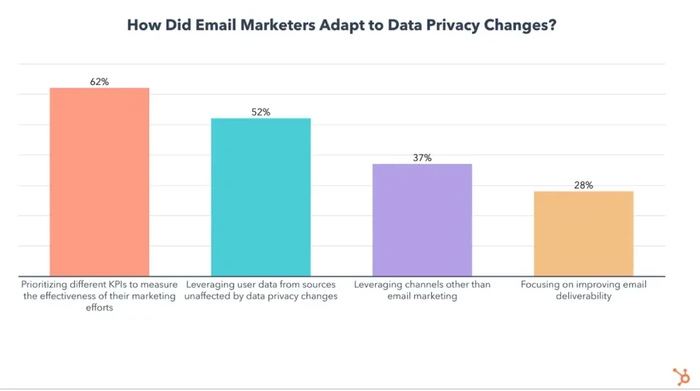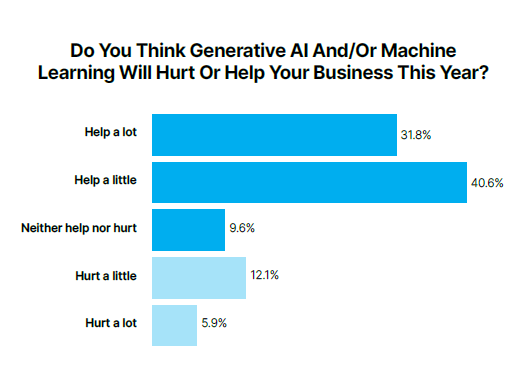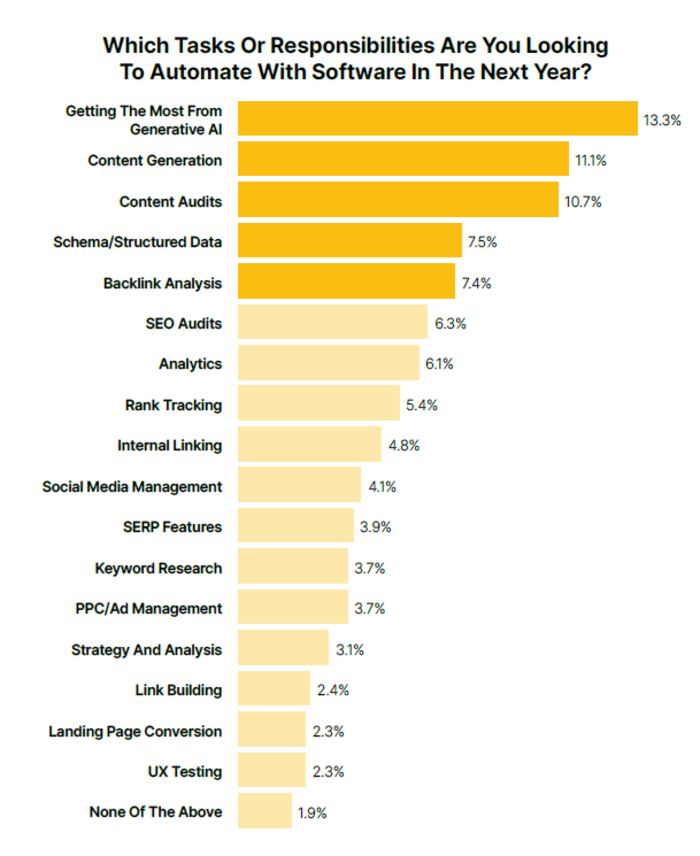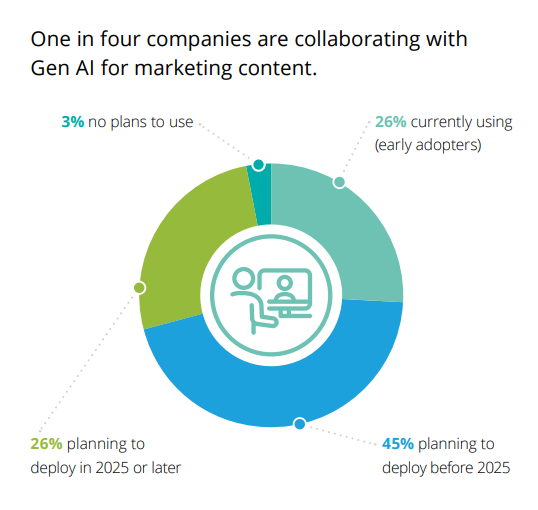Study: The State of Content Marketing in 2024
Learn Secrets for Organic Search Success, Successfully Adapt to AI Acceleration, and Elevate User Experience for Future-Proof Content Marketing Strategies
The current state of content marketing relies on tried and true tactics to maximize content management, strategy, and execution.
Despite the constant updates to search engine algorithms and the emergence of new technologies, content marketers are finding solace and success in focusing on what’s always worked – adhering to standard content marketing practices, continuing education, shifting priorities, and adopting new technology.
To better understand what’s currently working in the world of content marketing, we examined over 13 million web pages with the help of Ahrefs’ Content Explorer tool as well as a mixture of other prominent industry studies. From this deep dive, we uncovered several key findings:
- Keyword research is integral to ranking for desired keyword terms
- The higher the domain authority the better
- Referring domains are helpful
- Social media sharing (specifically X) helps boost content visibility
Some additional areas of opportunity we’ll explore further throughout this study are video and email content, and AI content strategy.
By exploring the latest trends, disruptors, and top areas of focus, we hope to provide you with a comprehensive overview that equips you with actionable strategies to drive your content strategy forward. Use this report as your guide to make your efforts more rewarding and to further your content marketing expertise.
Key takeaways at a glance
- Keyword research is imperative. Having a firm understanding of the types of keywords you want to target and the tactics to take you higher is crucial.
- Improving domain authority can lead to higher search rankings. For high-competition keywords, our research shows a 69 domain authority score on average is needed to rank in the top 10 search results according to Ahrefs’ Content Explorer tool.
- The more referring domains the better. For highly competitive keywords, our research shows an average of 2,697 referring domains (also known as backlinks) is needed to rank in the top 10 search results according to Ahrefs’ Content Explorer tool.
- Social shares seem to have some correlation with search ranking. For highly competitive keywords, our research shows an average of 80 shares on X is needed to rank in the top 1,000 search results.
- Longer-form content is winning. For highly competitive keywords, our research shows an average of 3,772 words on a web page is needed to rank in the top 10 search results according to Ahrefs’ Content Explorer tool.
- Content reigns supreme. SEO professionals state that content and content strategy are their top focus this year. (Search Engine Journal)
- Content is the most effective SEO strategy. SEO professionals also cite the power of content marketing, saying it’s the number one most effective overall SEO strategy. (Search Engine Journal)
- Content marketing is a blessing and a curse. SEO professionals say content is the most difficult aspect of their jobs, albeit the most impactful. (Search Engine Journal)
- Video content creation is growing in importance. Consumers are craving diverse forms of content, leading more brands to turn to video. Almost all marketers (96%) view video content as an ‘important part’ of their marketing strategy. (Wyzowl)
- Email marketing will remain a staple. The global email marketing market is projected to be valued at $17.9 billion by 2027. The compound annual growth rate (CAGR) for that period is expected to grow 13.3% between 2020 and 2027. (Statista)
- Generative AI continues to grow in importance. 26% of marketers already use generative AI, and another 45% plan to by the end of 2024. (Deloitte)
The digital marketing landscape is undergoing a noticeable transformation, yet despite this disruption the need for content continues to take top priority above every other marketing-related endeavor.
Search Engine Journal’s research shows not only how integral content efforts have become but also highlights content marketing as the most effective strategy, emerging as the top way to influence online visibility.
Our research highlights several key strategies content marketers should keep in mind, such as crafting longer-form content and effectively distributing and promoting content to gain backlinks and social shares.
As the demand for diverse content experiences continues to grow, video content creation is becoming increasingly important. An impressive 96% of marketers acknowledge how crucial video marketing is to their overall marketing strategy.
Research also shows email marketing will continue to remain resilient and is on track to achieve substantial growth, valued at nearly $18 billion by 2027.
Looking ahead, the adoption of generative AI by marketing professionals adds another layer of diversity, with over a quarter (26%) of marketers already leveraging this technology and an additional 45% planning to integrate generative AI into their strategies in the next few years.
In the following sections, we will examine these key findings at a deeper level and explore additional findings that support the narratives.
By weaving these diverse yet connected themes together, you’ll walk away with a deeper understanding of how to leverage emerging content marketing strategies to outrank your competition.
The future of content development, strategy, and production
Content marketing has long been a staple in overall marketing strategy but has recently become the stand-out star.
It’s more clear than ever that content is king and has immense opportunity to propel brands higher in the search engine results pages (SERPs), develop lasting relationships with current customers, and earn staying power in consumers’ minds.
From our research, we can ascertain that content strategies, for the most part, remain consistent with what’s always worked well in the past: draft compelling content, write enough content necessary to make it meaningful, promote it to the best of your ability, and continue to share it wherever your audience spends time.
One of the most impactful places to share content from our research is X, and other social platforms like Pinterest seem to make less of an impact.
Domain authority score remains important
First developed by Moz, Domain Authority is a metric that predicts how likely a website is to appear in search engine results. Scores can range from 0 to 100, with higher scores typically indicating a greater ability for the site to rank in search engine results.
Achieving a high domain authority has long been important for websites because it serves as a metric that search engines use to assess credibility and trustworthiness.
From our research using Ahrefs’ Content Explorer tool, we’ve observed a higher domain authority correlates with better search engine rankings, leading to increased visibility and organic traffic.
- For high-competition keywords, our research shows a 69 domain authority score on average is needed to rank in the top 10 search results
- For medium-competition keywords, our research shows a 73 domain authority score on average is needed to rank in the top 10 search results
- For low-competition keywords, our research shows a 53 domain authority score on average is needed to rank in the top 10 search results
Key takeaway: A high domain authority score (~70 or higher) helps websites rank for highly competitive keywords in addition to other factors, such as on-page and off-page SEO tactics as evidenced by additional research conducted by Rocket Content.
Referring domains are helpful
Referring domains play a pivotal role in the success of content marketers as they help build the content’s overall authority and credibility in the eyes of search engines.
Referring domains help improve your content’s visibility too, as it enables a broader audience to discover and engage with your content.
This is where creating content that’s binge-able, valuable, and relatable to your target audience comes into play.
The more beneficial your audience perceives your content to be, the more likely you’ll be able to build a strong backlink profile, boost credibility, and create content that resonates with your audience.
- An average of 2,697 backlinks are necessary to rank in the top 10 search results for high-competition keywords
- An average of 80 backlinks are necessary to rank in the top 10 search results for medium-competition keywords
- An average of 12 backlinks are necessary to rank in the top 10 search results for low-competition keywords
Key Takeaway: The number of referring domains needed to rank highly in the SERPs significantly drops when targeting medium and low-competition keywords
Content remains the most difficult aspect of SEO
It won’t come as a surprise for many to learn that marketing professionals cite Content (Production/Marketing/Strategy) as the most difficult SEO task.
Content marketing came in on top in difficulty, finding a place above technical SEO, algorithm changes, and the rapid onset of technology.
- 13.8% of marketers think content (marketing/strategy/production) is the most difficult SEO task
- 8.8% of marketers think technical SEO is the most difficult SEO task
- 8.6% of marketers think algorithm changes are the most difficult SEO task
Key takeaway: Marketers believe content (production/marketing/strategy) is the most difficult SEO task.
Content is the main area of focus
Despite its difficulty, that isn’t stopping brands from tackling content initiatives. Marketers say they’ll be doing a lot more of it and intend to make it their main area of focus for the next 12 months.
They also intend to focus on data analysis, better understanding the audience, and building a subscriber list.
- 13.5% of marketers intend to focus on content strategy/production in the next 12 months
- 9.6% of marketers intend to focus on data analysis in the next 12 months
- 8.8% of marketers intend to focus on better understanding the audience in the next 12 months
- 8 in 10 marketing leaders say content marketing has become vital to digital marketing strategies
In the year to come, it’s evident that SEO professionals will diversify their efforts with content laying the foundation to build upon a comprehensive approach that includes effectively measuring these efforts, as well as effectively engaging and growing their user base.
Key takeaway: Content strategy/production will be marketers’ main area of focus in the next 12 months.
Content is the most effective strategy
It’s no secret that content isn’t a quick win. Marketers must be in it for the long haul and able to deal with the ebbs and flows that will inevitably come. However, if marketers can look past the struggles, they may find that content becomes their most effective strategy for improving SEO.
- 16.7% of marketers believe their overall content strategy is the most effective SEO strategy they’ve used recently
- 12.8% of marketers believe topic clustering is the most effective SEO strategy they’ve used recently
- 11.8% of marketers believe link building is the most effective SEO strategy they’ve used recently
SEO professionals surveyed agree that content marketing is the most effective SEO strategy followed by topic clustering, link building, long-tail keywords, and competitor replication.
The case for content marketing is evident based on the research we’ve conducted, and not only lends itself to SEO wins but marketing, sales, and customer-centric teams too.
Key takeaways: While content marketing commands great respect, it isn’t the only endeavor to focus your attention on and works best alongside other strategies, like those listed in the bar chart below (topic clustering, mobile optimization, user experience, etc.).
Content repurposing will gain traction
Many content marketers focus their efforts on creating new content. While new content serves its purpose and tells search engines that you are a reliable, consistent, authoritative resource in your respective industry, content repurposing can’t lose a spot on marketers’ list of priorities.
In today’s dynamic digital landscape where new information comes out quickly around any given topic, recycling and reimagining existing content can be worthwhile to maximize its value. It can breathe new life into a post that’s already performing well and provide a more relevant user experience by adding updated information.
By revisiting and redistributing your evergreen content, you not only extend its use but also meet your audience’s need for timely information that resonates with them.
Content can be repurposed in a variety of diverse formats such as infographics, podcasts, videos, or social posts, extending the content’s reach across various channels and platforms. In turn, this effort can lead to driving new leads and qualified traffic that ultimately converts to a sale.
For B2B marketers specifically, they cite not enough content repurposing as their top challenge faced while scaling content production. Content repurposing can help marketers solve this top challenge when looking to maximize their content production efforts.
Key takeaways: B2B marketers will focus more attention on content repurposing.
The future of social media marketing and social content
Social media marketing holds the power to shape consumers’ perceptions of a business. The more positive a brand appears to be from the perspective of other consumers and from what can be gathered online the better.
Social content works seamlessly alongside other content marketing initiatives, serving as the foundation for crafting favorable narratives, sparking conversations, and furthering connections with customers.
Its short-form content approach allows brands to break down complex messages into bite-sized, shareable snippets. To keep up with emerging trends and the fast-scrolling nature of social media feeds, content marketers are shifting their focus to stand out from the crowd.
To start, brands are adopting an engagement-centric approach, focusing on interactive features embedded in social platforms, such as likes, comments, shares, and polls. Each of these features enables brands to amplify the potential for user interaction.
These features not only encourage engagement but also create a feedback loop, allowing brands to gather valuable insights into consumer preferences, opportunities for improvement, and current trends. Along with engagement, we are also seeing content creators shift to interactive forms of content production.
Text-based content isn’t commanding attention like it used to. Instead, consumers are looking for powerful visuals, captivating videos, and audio enhancements.
Ultimately, social content strategies and best practices will look different in the future, and embracing a powerful combination of brand storytelling and sustained consumer engagement will be the key to thriving in the social space.
Social shares seem to have some correlation with search ranking
It’s long been a point of contention for content marketers whether social sharing plays a role in search engine rankings.
While the debate continues, our findings highlight the increasing significance of social signals as a potential influence on a piece of content’s visibility in search engine results for competitive keywords.
- For high-competition keywords, our research shows content is shared on X an average of 153 times when examining the top 10 search results
- For medium-competition keywords, our research shows content is shared on X an average of 19 times when examining the top 10 search results
- For low-competition keywords, our research shows content is shared on X an average of 1 time when examining the top 10 search results
Key takeaways: Social signals seem to influence rankings for high-competition keywords.
Video-form social content will reign supreme
Video content has become a constant in the world of social media. Nearly every social platform now focuses on social video content. TikTok officially has over 1 billion monthly active users (falling very closely behind other top-performing social platforms).
- Facebook – 2.9B
- YouTube – 2.2B
- Instagram – 1.4B
- TikTok – 1B
- LinkedIn – 1B+
- Snapchat – 750M
- Pinterest – 480M
- X (or formerly Twitter) – 300M
The success of TikTok, along with other video-centric platforms like YouTube and Instagram with large user bases, highlights a fundamental shift in how audiences prefer to consume information and entertainment.
Video social media content allows its end users to express their individuality, creativity, and authenticity in a way that words alone can’t.
Knowing TikTok is quickly finding a place as a top social media platform in terms of usage, marketers (96%) continue to value video as an ‘important part’ of their marketing strategy.
Additionally, a study found video continues to be used by most businesses to drive their branding and messaging. Ninety-one percent of businesses use video as a marketing tool in 2023, up 5% from 2022 (86%).
Key takeaways: Almost every business now uses video marketing.
Businesses that are leveraging video are seeing results to back their efforts.
- 96% of marketers say video marketing has increased user understanding of their product or service
- 95% say video marketing has helped them increase brand awareness
Social media platform adoption will become more strategic
Long gone is the perception that being on every social media platform wins the most business. Brands are no longer emphasizing mastering every single social avenue available. Instead, they’re refining their focus on the platforms that matter most to their audience.
By streamlining their efforts, businesses can adopt a more strategic approach to social media marketing based on ROI, where their target demographic spends the most time, and where they see the most engagement.
This shift in strategy reflects a more nuanced understanding of the digital landscape, recognizing that the key to social media success lies not in tackling every platform but in precision.
Brands are recognizing that a targeted and intentional presence on the platforms will help build the level of personalization audiences crave.
Brands will likely see greater impact refining their focus instead of taking the scattered approach across every social avenue. In 2023:
- 16% of businesses use TikTok
- 5% of businesses use LinkedIn
- -11% of businesses left behind Pinterest
- -7% of businesses left behind X (or Twitter)
Key takeaways: Brands have already started leaving behind some of the bigger-name social media platforms, as evidenced in the change in platform use for businesses from 2022 to 2023 graphic below.
Brands will align more closely with consumer needs
There has long been a clear divide between what a brand thinks a consumer wants to see versus what a consumer wants to see on social media. Brands are often drawn to publicizing their latest blog post, product release, and other company updates.
Consumers, on the other hand, use social media as a way to decompress after a long day of work, scrolling aimlessly through an endless stream of content. A survey found staying in touch with family and friends is the top reason consumers use social media, followed by being entertained and mentally unwind.
Consumers are also expressing their concern with brands shouting self-promotion a little too loudly.
- 34% of consumers say “too much self-promotion” is a major turn-off in how they perceive brands on social media
- 56% of consumers think that brands should be more relatable on social media to win their attention and interest
How can brands effectively bridge the gap between being too boisterous about their brand building and not promoting their brand enough? Produce and publish content that’s more authentic and relatable.
Key takeaways: Brands can effectively bridge the gap between being too boisterous about their brand building and not promoting their brand enough by producing and publishing content that’s more authentic and relatable.
Social search will become more popular
The way people search for information constantly evolves, however, if you’re not found where they’re looking you may lose a customer. Consumers historically have turned to traditional search engines to find answers to their queries.
Today, 88% of consumers still turn to search engines but they’re also looking for answers elsewhere. Nearly a third of consumers are leveraging social search to answer questions online.
This emerging behavior presents a unique opportunity for brands to surface relevant keywords in their social post copy to attract qualified visitors. We anticipate more consumers will navigate to their favorite social media platforms to find answers to their questions.
If brands aren’t paying attention to this trend, they might leave a motivated customer on read. Brands should prioritize adding keywords to their social post content, especially on the platforms their target audience uses most and if their target audience is younger.
Keep in mind that 31% of Gen Z and 28% of Millennials combined prefer to search on social media over search engines.
- 88% of consumers use search engines to search for answers to questions online
- 31% of consumers use social media to search for answers to questions online
- 12% of consumers use AI chatbots like ChatGPT to search for answers to questions online
Key takeaways: As search behaviors transform, so too must brands’ search strategies. Ensure your business stays on the path toward social search progress and revise your content planning accordingly.
The future of email marketing and messaging
The future of email marketing holds exciting promise in terms of revenue potential, technological advancements, and revamping best practices to align more closely with shifting consumer behaviors.
Email as a content marketing strategy won’t be slowing down any time soon; Statista predicts the global email marketing market will be valued at $17.9 billion by 2027. Additionally, the compound annual growth rate is expected to grow by 13.3% between 2020 and 2027.
Personalization will continue to play a key role in email outreach efforts and marketers will leverage AI to deliver hyper-personalized content to improve relevancy.
As with any user behavior analysis, having a deep understanding of how consumers search and find your business as well as their preferences and engagement patterns can help you tailor your email campaigns to individual needs, creating a more engaging experience.
This move towards highly targeted, user experience-focused content not only enhances customer satisfaction but also improves conversion rates, as recipients are more likely to open and read messages that match their interests. Automation is another key trend that will define the future of email marketing.
With the increasing availability of sophisticated marketing automation tools, businesses can segment email lists, send targeted messages at optimal times, and nurture leads through different sequences more effectively.
Automation allows for the creation of drip campaigns, where a series of pre-scheduled emails are sent based on specific triggers or user actions. This leads to time savings, reducing the burden on teams while also ensuring a timely, targeted communication flow.
As privacy concerns become more of a concern than ever before with AI’s infiltration, the future of email marketing will also see a greater emphasis on permission-based communication. Marketers will need to be mindful of data protection regulations and prioritize building trust with their audience with easy opt-out functionality.
Implementing a clear opt-in process, providing transparency about data usage, and respecting user preferences will all lend to building positive relationships with subscribers.
The future of email marketing is bright and relies on relying on a combination of tactics including personalization, automation, and a commitment to respecting user privacy. By optimizing processes for the aforementioned email strategies, the future will look brighter for content and email marketers.
Consumers will continue to expect personalization
Personalization is one of the key ways marketers build stronger connections with their audiences and encourage trust. Personalization in email marketing is no different and has been proven to have a positive impact on email marketing efforts.
By tailoring content to individual preferences and previous shopping behaviors, email subscribers feel like more than just a number. It goes beyond addressing the subscriber by their name; it’s all about delivering relevant and timely content based on search and purchase history, and other touchpoints with your business.
The best place to turn to break down these insights is already at your fingertips: your customer data. By analyzing this wealth of data on a deeper level, you can better understand what motivates your customers and craft targeted content that resonates with them.
Personalized emails generate higher open rates, click-through rates, and, ultimately, better ROI compared to mass messages.
- 72% of consumers exclusively engage with personalized messaging
- 52% of customers say that when emails aren’t personalized, they’ll have their needs met elsewhere
- 82% of consumers will share behavioral data to receive personalized product recommendations
Key takeaways: Despite heated debate over data privacy concerns, 90% of consumers are willing to share behavioral data for a cheaper and easier shopping experience. The proof is in the numbers, personalization can go a long way in attracting and retaining loyal customers.
Automation will remain at the forefront of email activities
Automation has long been a game-changer in email marketing. With automation, marketers are better able to streamline processes and maximize efficiency—allowing them to focus on other key revenue-generating initiatives.
For content writers, the significance automation holds in improving job processes is monumental in terms of time savings, personalization scaling, and lead generation without constant manual intervention.
- Marketing automation tools improve productivity by approximately 20%
- 63% of companies are outperforming competitors with the help of marketing automation
Undoubtedly, email marketers will continue to utilize automation for its myriad benefits. They’ll continue to allocate spending towards automation realizing its potential to drive revenue and time savings.
- 63% of companies with successful marketing automation programs plan to increase their marketing automation budget in the year ahead
- 1% of marketers say their automation budget will decrease in the year ahead
Email marketing automation comes in as one of the top three marketing automation techniques used by marketers.
- Email automation (64%)
Profiling and targeting (26%) - Personalization using dynamic content (23%)
Knowing the important role email marketing automation plays, content marketers must ensure they continue to produce quality messaging that resonates with their target audience. To do so, content creators can create email nurture sequences for each distinct audience your industry serves, rather than creating a one-size-fits-all content approach to employ personalization.
Key takeaways: Keep in mind that 53% of businesses send the same email to all recipients so there are plenty of opportunities to outshine your competition.
Data privacy will continue to undergo a transformative shift
Consumer privacy is a more pressing issue than ever before and has been heavily scrutinized lately by consumers given increased regulations. Stricter data protection laws, like the General Data Protection Regulation (GDPR) and the California Consumer Privacy Act (CCPA), point to the importance of consent.
- 60% of people who know about data protection laws (like the GDPR) view them favorably
- 76% of people think it’s too hard to figure out what companies are doing with their data
- 65% of companies are very or extremely concerned about intellectual property or legal risks of using generative AI
Consent has long been a tricky subject to broach when it comes to email marketing, with more consumers growing frustrated by the influx of email marketing campaigns received daily. Marketers are adapting by prioritizing transparent data practices, obtaining explicit consent, and providing easy opt-out options.
Deceptive email opt-out practices will lessen including hiding unsubscribe links, complicated opt-out practices, ambiguous language, and more.
For businesses relying on email service providers for their communications, many are already integrating privacy-focused features, enabling marketers to keep information secure throughout the entire customer journey. As email marketing becomes more privacy-centric, marketers must take a proactive stance to align with current ethical standards.
Additionally, they must be prepared to adapt to an evolving privacy landscape to ensure that email content remains effective, respectful, and compliant with the latest data protection standards.
Key takeaways: 62% of marketers are prioritizing different KPIs to measure the effectiveness of their efforts to account for data privacy regulations that are impacting email campaign performance. Some of these KPIs include clicks and click-through rates to determine success rather than looking at open rates.
The future of AI content generation
A comprehensive content study wouldn’t be complete without a discussion about what we can collectively anticipate for the future of AI content generation. AI has undoubtedly become a top-of-mind topic over the past several years with the introduction of ChatGPT, Google’s Bard, and other popular generative AI tools.
These tools have changed the way we work, streamlining the writing process and offering a starting point for content creators struggling with writer’s block. We’ve seen AI can work, however, as much praise as it receives it also gets an equal amount of backlash.
Most recently we saw a dramatic shift in the perception of renowned sports publication Sports Illustrated for being outed for using AI-generated content to write published articles and product reviews.
The publication has now come under fire for other claims such as promoting a toxic work culture. Additionally, we’ve also heard of legislation talks, promising a safer future for the way AI uses personal data.
Despite these public cries for increased attention on ethical considerations and the desire for more authenticity from brands, the future of AI continues to be bright. Establishing clear legislation, robust guidelines, ethical frameworks, and ongoing discussion will ensure AI-driven content generation aligns more closely with global norms.
While conducting our research it’s evident businesses are excited about AI usage and will continue to incorporate it into their content marketing efforts. As content marketers, it’s important to keep in mind duplicating AI content in its entirety can cause misinformation and mistakes to be published.
It’s critical to always check important information to ensure its accuracy and validity before making information available for public consumption.
Generative AI will mostly help businesses
Despite valid concerns around generative AI, the majority of consumers believe it has the potential to transform the way we perform our job functions.
- 72.4% of people feel positive about AI’s potential impact
- 31.8% report they think generative AI and/or machine learning will help their business a lot this year
- 40.6% say that they think generative AI will help their business a little
- Only 5.9% believe generative AI will hurt their business a lot
The overwhelmingly positive sentiment among consumers and business owners alike regarding the potential of generative AI signals a significant shift in how businesses perceive its potential.
The data suggests that while some consumers are apprehensive about the harm AI can cause their business, the percentage of those who perceive AI as hurtful is outweighed by the belief that generative AI is helpful.
Key takeaways: As businesses continue to evaluate and adopt AI use, there is a clear consensus: we will see a closer bond developed between businesses and generative AI. In turn, we’ll witness more industries lean on AI’s potential to drive meaningful results.
Consumers will continue to seek to understand AI’s value
As AI becomes more than just a buzzword, consumers want to understand the value AI can deliver in their everyday lives. For some, AI’s potential is still a mystery and they aren’t sure how to maximize its full potential.
- 13.3% of respondents in a recent survey said they are looking to get the most from generative AI
- 11.1% said they were looking to automate content generation
- 10.7% said they were looking to automate content audits
All three of these types of automation endeavors can be accomplished with generative AI.
Key takeaway: Research alludes to consumers wanting to utilize AI to automate tasks to enhance efficiency, productivity, and performance. However, there seems to be a gap in consumers needing more formal education and best practices on how to use AI to effectively complete tasks. It’s equally as important to share AI’s potential risks.
Through a more informed approach, adopting AI technologies won’t be as scary and may deliver better and more ethical results.
More marketers will use AI than ever before
Although marketers remain skeptical about the ethics, potential use cases, and safety of AI, they’re still willing to use it. Deloitte Digital’s new research on generative AI in marketing content production illuminates how AI will impact content efforts.
Several key takeaways from their research include:
- 26% of surveyed marketers already use generative AI
- 45% of marketers plan to use AI by the end of 2024
- 25% of organizations have already implemented generative AI in marketing operations
Apprehension surrounding the ethical considerations and practical applications of AI will continue to arise within the marketing community. Despite these fears, these statistics point to a positive future concerning AI adoption in the year to come, suggesting an evolving mindset where the pros outweigh the cons.
Research not only highlights the percentage of marketers currently using generative AI but also indicates the future of AI usage is bright with nearly half (45%) of marketers planning to integrate this technology before 2025.
Key takeaway: The findings imply a key moment in marketing technology evolution, as organizations recognize how AI can enhance content production and are ready to embrace it within the next few years.
Conclusion
All of our collective findings reveal the state of content marketing is evolving but tried and true principles will remain the same. Improving domain authority, keyword research, content relevance, and content distribution will continue to remain effective content marketing strategies.
On the other hand, the integration of generative AI into content creation processes will continue to make waves in the industry, as evidenced by Deloitte Digital’s research, indicating that 26% of marketers already use AI in some capacity, and an additional 45% plan to do so by the end of 2025.
While content strategies become more difficult to carry out, particularly given rapidly evolving technology and growing expectations, c-suite leaders will continue to prioritize content marketing efforts because they see the value they can bring.
Creating social content is another key piece of the content machine. Social media marketing efforts must continue to evolve alongside SEO to meet the evolving demands of consumers.
To meet these demands, businesses must strategically align with consumer preferences, such as integrating interactive features and visual content in their posts to stand out in the competitive social landscape.
Video-form social content is gaining traction, and businesses are adopting a more strategic approach to platform management, focusing on social platforms where their audience spends most of their time.
The future of email content looks promising, with a projected market value of $17.9 billion by 2027. Content personalization and automation are pivotal trends to incorporate into your email marketing to ensure your user experience stays superior.
However, as privacy concerns escalate, a shift toward permission-based communication and transparent data practices must become a crucial area of focus. Marketers must adapt to and stay informed of ongoing privacy law changes, ensuring their strategies stay compliant.
AI content generation will continue to steal the spotlight for the foreseeable future, with businesses mostly optimistic about its potential. Despite some reservations, the overwhelming sentiment is notable, with 72.4% of marketers expressing positive interest in AI’s potential.
As marketers navigate how to use AI for content generation while adhering to ethical considerations, the research suggests a growing willingness to take advantage of this technology for its potential to enhance content marketing.
In the ever-evolving world of content marketing and strategy, there are three main pillars to success–staying informed, adapting strategies, and embracing innovation. We wish you continued success with your content marketing efforts, and we are always here to help you with our plethora of educational resources and full SEO course.



